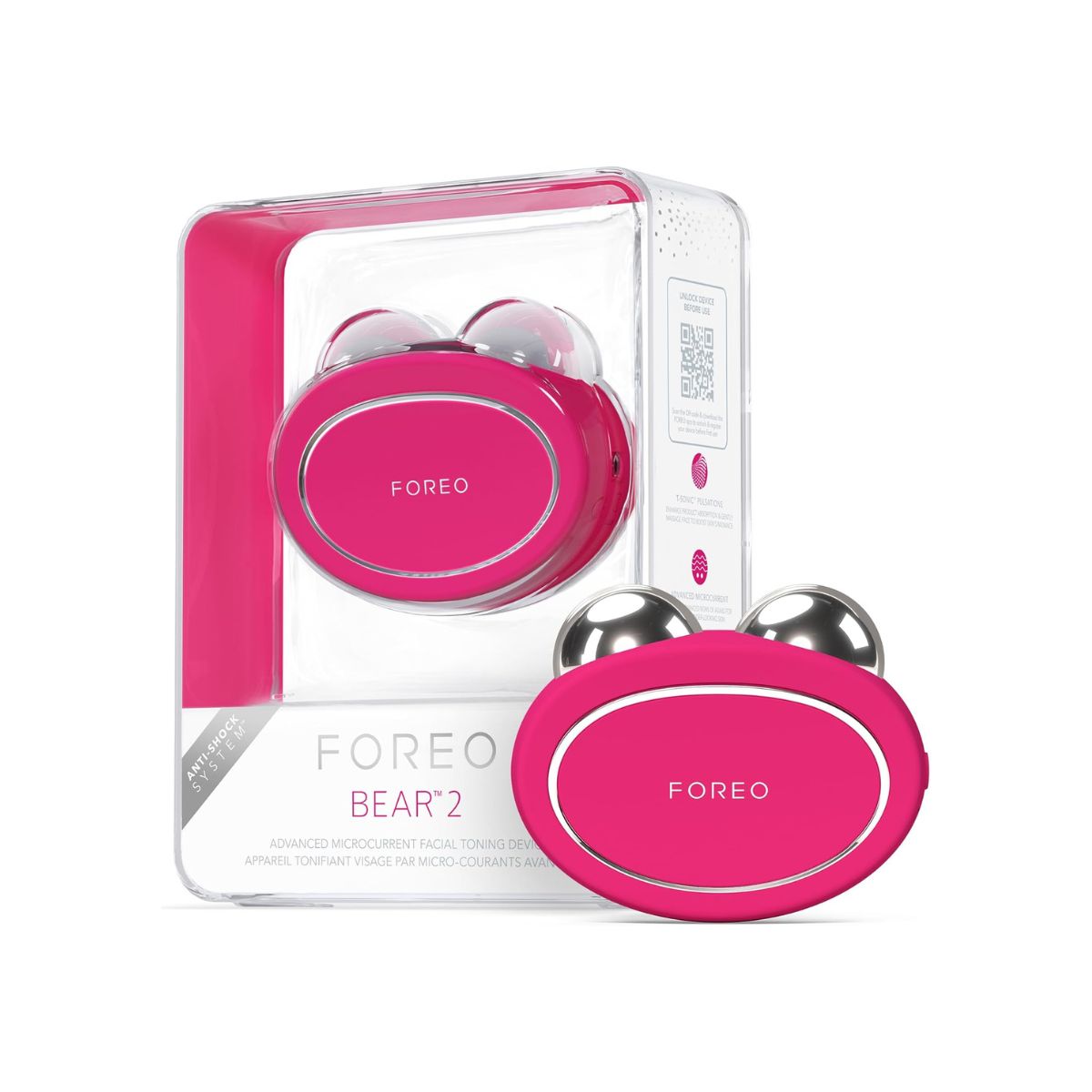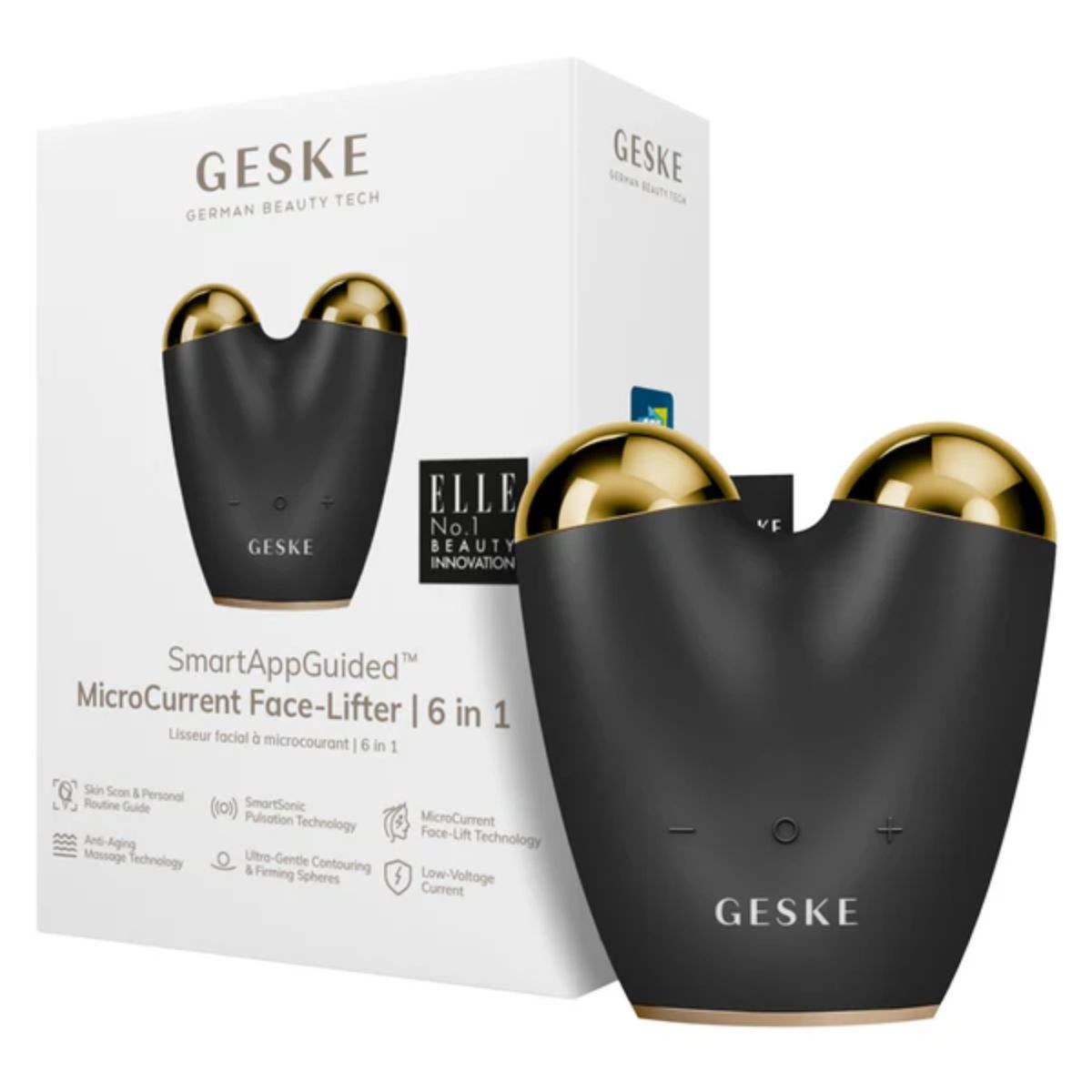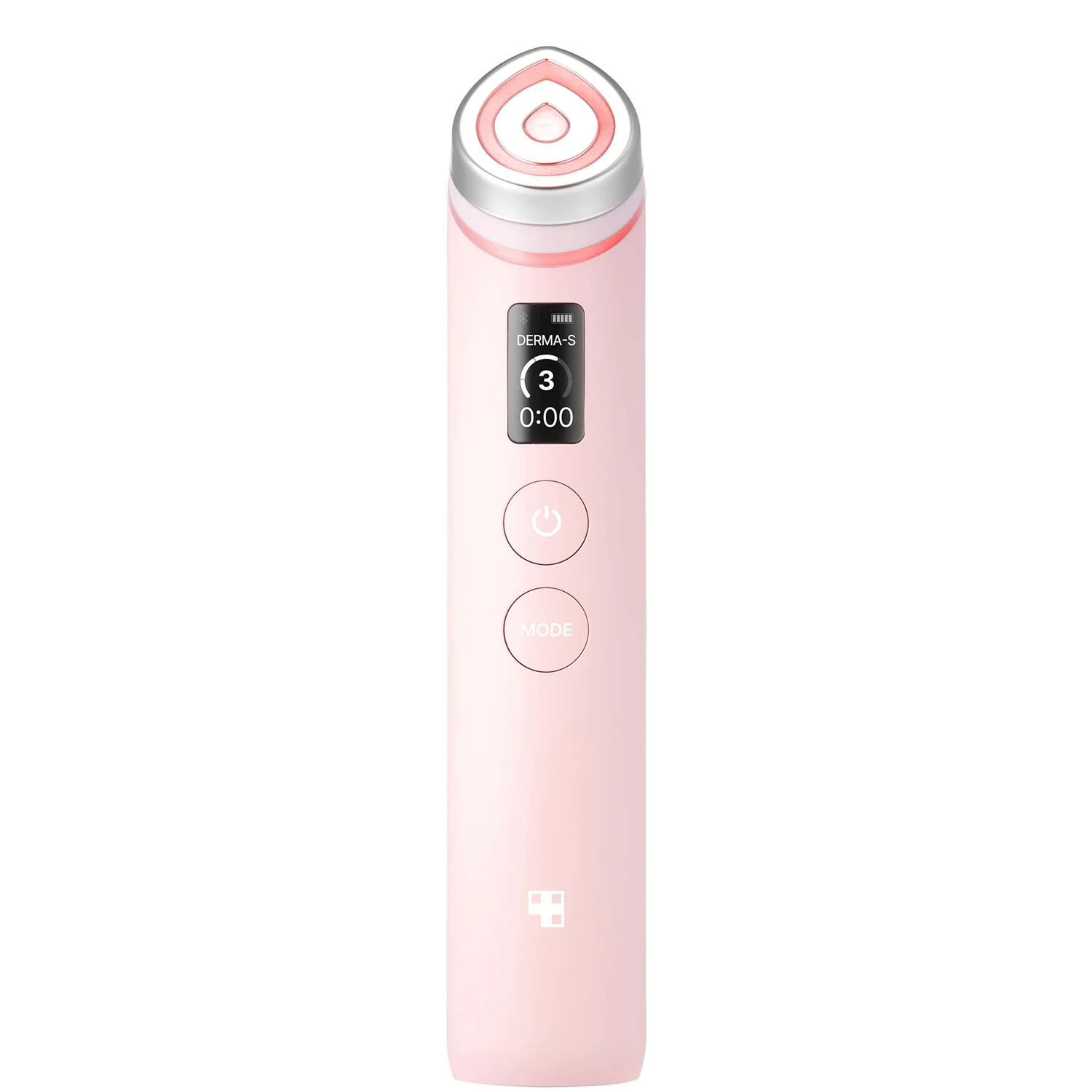Skincare Experts Swear by Microcurrent Devices for a Sculpted, Lifted Complexion From Your Bedroom
Here's how they work, and our favourite tools for visible results


Skincare tech is booming this year. From LED face masks to acne devices, these little at-home plug-ins seemingly promise to be the answer to a flawless complexion without any injections or serious surgery. The latest investment of choice? Microcurrent devices, which work your facial muscles to shape and define without any pain or downtime.
"Microcurrent therapy is a non-invasive facial treatment that uses low-level electrical currents to stimulate the facial muscles and skin," explains Dr. Raj Arora, GP and FOREO ambassador. "These mimic the body's own natural electrical currents. Microcurrent therapy can often improve facial contour, tone, and reduce the appearance of fine lines and wrinkles."
Perhaps unsurprisingly, these devices don't come cheap—they're a small investment that can take some consideration, namely whether or not they will work for you, your skincare routine, and your personal goals. Dr Arora has given me the full rundown on these devices, answering some of the most frequently asked questions you might want to know the answer to.
Plus, I've put several microcurrent tools to the test to see how they function and if they really deliver on their promises, as well as rounding up some more affordable starter options. Here's what you need to know.
How do microcurrent devices work?
"Microcurrent therapy works by sending gentle electrical currents through the skin to the facial muscles," says Dr Arora. "These currents stimulate ATP (adenosine triphosphate) production, which stimulates cellular energy. Increased ATP production encourages collagen and elastin synthesis, leading to firmer, healthier-looking skin. It can also help with lifting and tightening the muscles beneath the skin."
Are microcurrent devices painful to use?
"Microcurrent treatments are generally not painful," says Dr Arora. "Most people describe the sensation as a gentle tingling or a slight pricking feeling, but it is typically a very mild sensation. Some may find it slightly uncomfortable but not usually painful."
After several uses, I can attest to this. I have never had any pain from using a microcurrent device—rather, they can provide soothing massaging effects that revitalise my skin.
Celebrity news, beauty, fashion advice, and fascinating features, delivered straight to your inbox!
Are microcurrent devices safe to use?
"Microcurrent is considered safe for most people when used correctly," says Dr Arora. "However, individuals with certain medical conditions, such as epilepsy, heart conditions, or those who have pacemakers, should avoid it. Pregnant women are also advised to consult with a healthcare provider before using microcurrent devices. If in doubt, always clear with your healthcare professional before commencing microcurrent therapy."
How often to use a microcurrent device
"The frequency of use can vary depending on the specific device and your skin's needs. Generally, for at-home devices like the FOREO BEARTM 2, it is recommended to use them 2-3 times a week for best results. Always follow the manufacturer's guidelines and pay attention to how your skin responds, and if in doubt seek a professional opinion."
Due to the non-invasive nature of microcurrent devices, you're unlikely to see any adverse effects if you use them slightly more or less than stated above. As Dr Arora stresses, listen to your skin and how it looks and feels to garner the cadence that works for you.
Shop the best microcurrent devices

The Ziip Halo is my microcurrent device of choice at the moment, and has been for several months now. It's small and very easy to hold, and it provides instant lift and sculpting—particularly around my cheekbones. It doesn't hurt at all, it's easy to charge up and store when not in use, and it glides over the gel effortlessly. The only downside is you will need the compatible gel for best results, but a bottle of it comes with the device.

The Nuface is arguably the most recognisable microcurrent device, and the tool that turned many of us onto the technology in the first place. The beauty of the Nuface is its shape—the handle makes it comfortable to grip onto, and the round head attachment gives a lovely massaging feel. It is a little more chunky than other models, but the results speak for themselves. Expect a gradual improvement the more you use it.

The main selling point of the BEAR 2 is its customisable technology. "You can use these devices to tailor your routine at home and/or follow pre-programmed routines, as on the FOREO App," explains Dr Arora. It has the same massaging and sculpting effect as other microcurrent tools, as well as five different massage patterns, three in-app treatment guides, and 300 minutes of charge time.

If you want to give microcurrent technology a go before you invest in a pricey machine, this Geske model comes highly rated by customers and has six smart features to try. As with most beauty tech, you do get what you pay for, so this may not last as long or provide as dramatic results as the more advanced tools. However, it's a brilliant starter option that's budget-friendly.
What is the difference between in-salon microcurrent treatments vs. at-home devices
Dr Arora outlines the key differences below:
"1. Strength and Precision: Salon treatments typically use professional-grade devices that deliver higher-strength currents and are applied by trained professionals, allowing for more precise targeting of muscles and skin.
2. Customisation: Professional treatments can often be more tailored to individual skin needs and conditions, whereas at-home devices offer a more one size fits all approach.
3. Results: Salon treatments may provide more immediate and dramatic results due to the higher intensity and expertise involved, while at-home devices usually require consistent use over time to achieve desirable results.
4. Cost and Convenience: At-home devices can be more cost-effective in the long term and offer the convenience of use at your own pace and schedule. They can also be great adjuncts to in-clinic treatments."
Microcurrent, Nanocurrent, or EMS—what are the differences?
Dr Arora explains how each technology works:
"Microcurrent: Uses low-level electrical currents to stimulate the facial muscles and skin, focusing on improving muscle tone, collagen production, and skin elasticity.
Nanocurrent: Similar to microcurrent but operates at an even lower intensity, nanocurrents claim to allow for deeper penetration into the skin cells. It aims to work on a cellular level, enhancing skin repair and rejuvenation.
EMS (Electrical Muscle Stimulation): Delivers stronger electrical currents designed to contract the muscles. EMS is often used in physical therapy and fitness but can also be found in some facial and body toning devices. It provides more intense muscle stimulation compared to microcurrent.
Each technology can offer unique benefits, and the choice depends on individual skin concerns, desired outcomes, and personal comfort with each method. It is important to stress that these devices should always be used with diligence and following manufacturers guide. If you are unsure of a contraindication, always consult your doctor or healthcare professional."

Amelia is currently Acting Junior Shopping Editor at Marie Claire UK. With a keen eye for lifestyle trends and a focus on quality over quantity, she is very clued up on the best products and brands on the market. She previously worked as a senior writer for woman&home, covering everything from product reviews and nail art trends to reporting on fashion weeks and the best-dressed celebrities at red carpet events.
